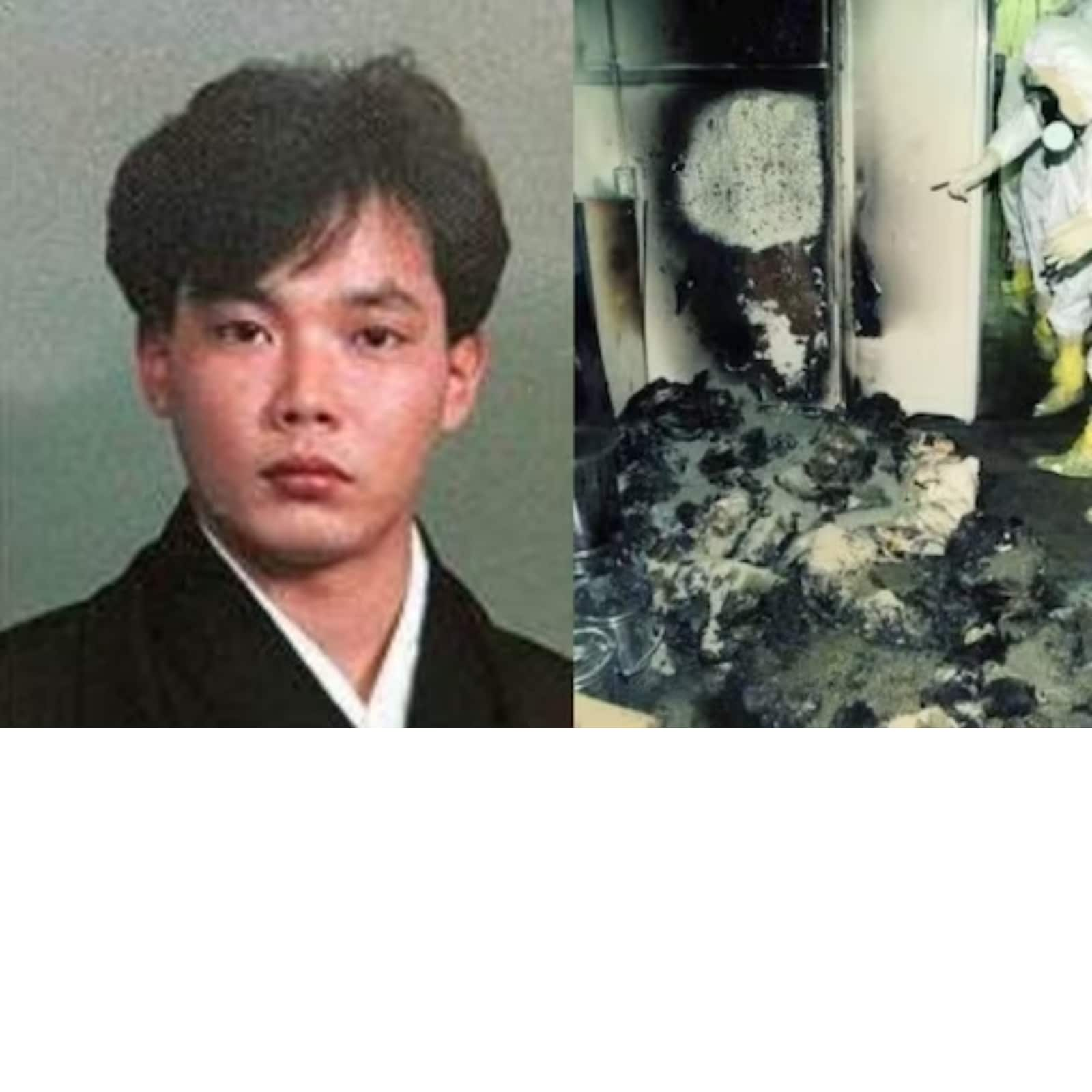**You might have stumbled upon some chilling images online that left you questioning the reality of what you’ve seen. Hisashi Ouchi’s story is one of those moments in history that has been both sensationalized and misunderstood. The true story behind the echte fotos—yes, the real photos—has been a subject of fascination and fear for years. Today, we’re diving deep into this tragic tale to uncover the truth, separate fact from fiction, and understand why Hisashi Ouchi’s name continues to haunt the internet.**
Picture this: you’re scrolling through your feed, and suddenly, a set of images labeled as "the most horrifying photos ever" pops up. Your curiosity gets the better of you, and you click. But what you don’t realize is that these images are tied to a real-life tragedy involving a man named Hisashi Ouchi. This isn’t just a story; it’s a cautionary tale about the dangers of nuclear radiation and the human cost of scientific accidents.
Before we dive into the nitty-gritty details, let’s set the stage. Hisashi Ouchi’s story is not just about the photos—it’s about the man, the accident, and the lasting impact on those who were involved. This article aims to shed light on the truth while respecting the gravity of the situation. So, grab a coffee, sit back, and let’s unravel the mystery behind Hisashi Ouchi and the echte fotos.
- Jerry Oconnells Net Worth Salary Career More 2024 Update
- Tata Towel Say Goodbye To Boob Sweat Discomfort Review
- Randy Meisner Height Age More The Eagles Bassist Facts
- Cj Spiller Jerseys Score Big With Bills Gear More
Biography: Who Was Hisashi Ouchi?
Hisashi Ouchi was a 35-year-old worker at the JCO nuclear fuel processing plant in Tokaimura, Japan. On September 30, 1999, his life took a tragic turn during a criticality accident that would forever change the course of history. Before diving into the details of the incident, let’s take a moment to understand the man behind the headlines.
Personal Details
| Full Name | Hisashi Ouchi |
|---|---|
| Age at Time of Accident | 35 |
| Occupation | Nuclear Fuel Processing Worker |
| Place of Work | JCO Tokaimura Plant, Japan |
| Date of Accident | September 30, 1999 |
Hisashi was a dedicated worker who, like many others, went to work expecting it to be just another day. Little did he know that this day would mark the beginning of a nightmare that would capture the world’s attention.
The Accident: What Really Happened?
On that fateful day in 1999, a series of human errors led to a catastrophic nuclear accident at the JCO plant. The workers were preparing a batch of uranium solution, but they miscalculated the amount of uranium being used. Instead of adding the solution gradually, they poured a large quantity into a precipitation tank, triggering a chain reaction known as a criticality event.
This criticality accident exposed Hisashi Ouchi and two of his colleagues to lethal doses of radiation. Ouchi himself received an estimated 17 sieverts of radiation, far exceeding the safe limit of 1 sievert. The radiation exposure was so intense that it caused severe damage to his body, leading to a prolonged and painful battle for survival.
The Photos: Fact or Fiction?
Now, let’s talk about the infamous "echte fotos" that have circulated online for years. These photos, claimed to be of Hisashi Ouchi, have sparked debates about their authenticity and the ethics of sharing such images. While some claim these photos are real, others argue they are digitally altered or completely fabricated.
It’s important to note that the actual photos of Hisashi Ouchi were never released to the public due to privacy concerns and ethical considerations. The images you might have seen online are often sensationalized or entirely fake. The true story behind the echte fotos lies in understanding the impact of radiation exposure on the human body, rather than relying on misleading visuals.
Health Impact: The Brutal Reality
The health impact of radiation exposure on Hisashi Ouchi was nothing short of devastating. Within hours of the accident, he began experiencing symptoms such as nausea, vomiting, and severe burns. His condition deteriorated rapidly as his body struggled to cope with the massive dose of radiation.
- Acute Radiation Syndrome (ARS): Ouchi suffered from ARS, which caused widespread damage to his organs and tissues.
- Bone Marrow Damage: The radiation destroyed his bone marrow, leading to a lack of blood cell production.
- Skin Burns: His skin was severely burned, and he required multiple skin grafts during his treatment.
- Prolonged Hospitalization: Ouchi spent 83 days in the hospital, undergoing experimental treatments in an attempt to save his life.
Despite the best efforts of medical professionals, Hisashi Ouchi passed away on December 21, 1999, leaving behind a legacy of caution and tragedy.
Scientific Perspective: Understanding Radiation
To truly grasp the severity of Hisashi Ouchi’s situation, it’s essential to understand the science behind radiation exposure. Radiation can be classified into ionizing and non-ionizing types, with ionizing radiation being the more dangerous of the two. When exposed to high levels of ionizing radiation, the human body undergoes cellular damage that can lead to severe health issues or death.
Studies have shown that even low doses of radiation can increase the risk of cancer and other diseases. The incident at the JCO plant served as a stark reminder of the importance of safety protocols in nuclear facilities. It also highlighted the need for ongoing research into radiation protection and treatment methods.
Public Reaction: A Global Outcry
The Hisashi Ouchi incident sent shockwaves around the world, sparking public outrage and calls for stricter regulations in the nuclear industry. People were horrified by the graphic details of the accident and the suffering endured by the victims. The media played a significant role in shaping public perception, often sensationalizing the story to attract attention.
However, this tragedy also led to increased awareness about the dangers of nuclear energy and the importance of transparency in reporting such incidents. It prompted governments and organizations to reevaluate their safety standards and invest in advanced technologies to prevent future accidents.
Ethical Questions: Where Do We Draw the Line?
As with any tragedy involving human suffering, the Hisashi Ouchi case raises important ethical questions. Should the photos of victims be shared publicly? How do we balance the need for transparency with the right to privacy? These are complex issues that require careful consideration.
Many argue that sharing graphic images can help raise awareness and prevent similar incidents in the future. Others believe that such actions can exploit the victims and their families, causing unnecessary distress. Ultimately, it’s up to society to decide where to draw the line between education and exploitation.
Media Coverage: Truth vs. Sensationalism
The media’s portrayal of the Hisashi Ouchi story has been a mix of truth and sensationalism. While some outlets provided accurate and informative coverage, others resorted to exaggeration and misinformation to grab headlines. This dichotomy highlights the challenges of reporting on sensitive topics like nuclear accidents.
It’s crucial for journalists and content creators to approach such stories with integrity and responsibility, ensuring that the information they provide is both accurate and respectful. By doing so, they can help educate the public without causing unnecessary harm.
Long-Term Effects: Lessons from the Past
The Hisashi Ouchi incident has had lasting effects on the nuclear industry and society as a whole. It prompted significant changes in safety regulations, training programs, and emergency response protocols. It also served as a reminder of the importance of accountability and transparency in high-risk industries.
Furthermore, the tragedy underscored the need for continued research into radiation medicine and treatment options. Scientists and medical professionals have since made strides in understanding the effects of radiation exposure and developing new methods to mitigate its impact.
Lessons Learned: Moving Forward
From the Hisashi Ouchi story, we can draw several important lessons:
- Safety First: Prioritize safety protocols in all industries, especially those involving hazardous materials.
- Education Matters: Educate workers and the public about the risks associated with nuclear energy and radiation exposure.
- Transparency is Key: Foster open communication and transparency in reporting incidents to build trust and prevent misinformation.
- Respect for Victims: Treat victims and their families with dignity and respect, avoiding exploitation for personal or financial gain.
By learning from the past, we can work towards a safer and more informed future.
Conclusion: The Legacy of Hisashi Ouchi
Hisashi Ouchi’s story is a powerful reminder of the dangers of nuclear radiation and the importance of safety in high-risk industries. While the true story behind the echte fotos may never be fully known, the lessons we’ve learned from this tragedy continue to shape our understanding of radiation exposure and its effects on the human body.
We invite you to reflect on the impact of this story and consider how you can contribute to a safer and more ethical world. Share your thoughts in the comments below, and don’t forget to explore other articles on our site for more insights into global issues. Together, we can make a difference!
- Yo Gottis Net Worth In 2024 How Rich Is The Rapper Now
- Chi Mcbrides Net Worth From Chicago To Hollywood Beyond


